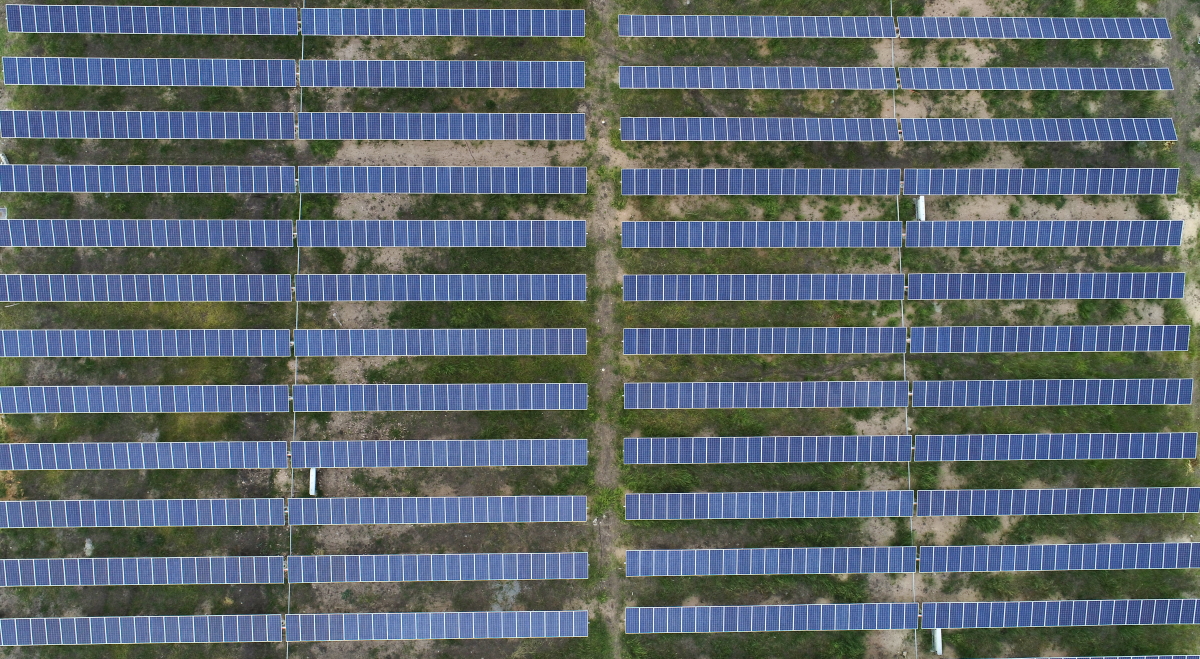Interest in renewable energy development has risen in India. Acknowledging the country’s growing energy needs, especially during the Covid-19 pandemic, the government is considering the climate crisis and deploying capital towards renewable energy transition.
India, the biggest emitter of annual greenhouse gases after the US and China, has already installed a renewable energy capacity of 147.05 GW – 46.37 GW of hydropower projects and 100 GW of solar and wind energy capacity.
The country has exceeded the 150 GW threshold in renewable energy capacity, including hydropower, according to the Ministry of New and Renewable Energy (MNRE). It is the only G20 nation on track to keep the Paris Agreement – keeping global warming below 2°C of pre-industrial levels.
Targetting to reduce dependancy on fossil fuels, India has committed the first time to net-zero emissions by 2070. For enhancing India’s manufacturing capabilities and enhancing exports for high-efficiency solar PV modules, the country has also committed $593 m via the so-called Production-Linked Incentive (PLI) Scheme.
A recent study by Lawrence Berkley National Laboratory (LBNL) found that India could economically meet its growing electricity demand, through renewables and complementary flexible resources. The examined future power investments into India. According to the study, dramatic cost reductions over the last decade in India’s energy sources, such as solar, and flexible resources, like battery storage have made it affordable to meet the country’s growing power demand dependably over the next decade.
The LBNL study, which was funded by the US Department of State’s Bureau of Energy Resources, added that the results of the study substantiate the climate target of increasing the total renewable energy capacity to 500 gigawatts (GW) by 2030, which was announced by India’s Prime Minister Narendra Modi at the 26th UN Climate Change Conference (COP26) in Glasgow.
Other renewable energy targets for 2030 include increasing the share of renewables in installed electricity capacity to 50% as well as using green energy (energy coming from renewable sources) to meet half of the country’s energy needs.
Rising inflow in India’s renewable energy investments
According to analysts, there has been rising inflow in India’s renewable energy investments. The country topped 3rd position in the Renewable Energy Country Attractiveness Index (RECAI) by Ernst & Young (EY), which ranks nations based on the attractiveness of their renewable energy investment and deployment opportunities. India moved up the index from 4th position in 2021, primarily because of the exceptional performance on the solar PV front, according to Somesh Kumar, Partner and National Leader, Power & Utilities, EY India.
As per a report by the clean energy communications and consulting firm Mercom Capital Group, India’s renewable energy market remains one of the most attractive to foreign investors. The clean energy communications and consulting firm emphasised the role of foreign environmental, social, and governance (ESG) funds in the expansion of India’s renewable energy sector. ESG funds refer to portfolios of equities or bonds in which sustainability factors are taken into consideration in their investment process.
Mercom believes that aside from the government’s well-defined renewable energy targets and the country’s rising energy demand, Indian companies’ initiatives to set their own carbon neutrality targets and raise ESG-linked funds would allow the country to tap into foreign ESG funds.
Shantanu Srivastava, a financial analyst at the Institute for Energy Economics and Financial Analysis (IEEFA), mentioned that India has attracted $14.2 bn of investments in the sector, mostly from foreign lenders. These investments came in various forms, including mergers and acquisitions, joint ventures, Infrastructure Investment Trusts (InvITs), and green bonds. Srivastava noted how Indian players’ green bond issuances have been positively received by global investors.
Meanwhile, Rahul Varshney, Country Head for India at Statkraft, said the Norwegian hydropower company maintains a positive outlook for India’s financial infrastructure because of significant capital inflow into the country from long-term players. According to Varshney, the Indian renewable energy sector has been receiving investments from leading global infrastructure funds, sovereign wealth funds, and pension and investor funds, particularly in the wind and solar sectors.
Long way to achieve climate goals
Despite India’s ambitious climate targets, doubts remain about the country’s progress towards decarbonisation. Some analysts are concerned about the flow of renewable energy investments, others remain worried that the freshly set climate goals could hurt the country’s economic targets.
Mercom argues that the Indian government should remove a number of policy bottlenecks in order to attract more foreign ESG funding and boost its renewable energy sector. One major issue is the inclusion of the energy sector in the Concurrent List of the Indian Constitution. This is because the federal government and state governments often get into conflicts regarding the regulation of the sector. Other investment barriers include concerns regarding the financial health of distribution companies (DISCOMs), payment-related uncertainties, and the sanctity of contracts.
Priyanka Kishore, Head India and South East Asia at Oxford Economics, also believes that India will not receive sufficient funding from developed countries in this undertaking. As per the analyst, this goal would require investments worth $200 bn annually in the 2020s and 2030s. She added that spending requirements would increase steadily as low-cost technologies are used up. Moreover, the country would have to rely on private investment to fill the gap in the investment requirements.
In the meanwhile, the global forecasting firm also questioned whether India will achieve its new climate goals without affecting its economic targets. India aims to become a $5 tn economy by 2024-25. The global forecasting firm praises the country’s net-zero pledge by 2070 but calls its path toward achieving this goal ambitious.
“We think India’s net-zero timeline will need to be revisited. We maintain our baseline view of India’s carbon emissions beginning to peak in the late 2040s,” Oxford Economics stated.










 Australia
Australia China
China India
India Indonesia
Indonesia Japan
Japan Malaysia
Malaysia Philippines
Philippines Singapore
Singapore South Korea
South Korea Taiwan
Taiwan Thailand
Thailand Vietnam
Vietnam Germany
Germany Hong Kong
Hong Kong USA
USA Switzerland
Switzerland Singapore
Singapore
 United Kingdom
United Kingdom








